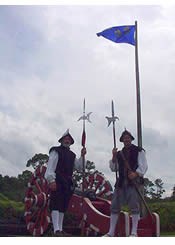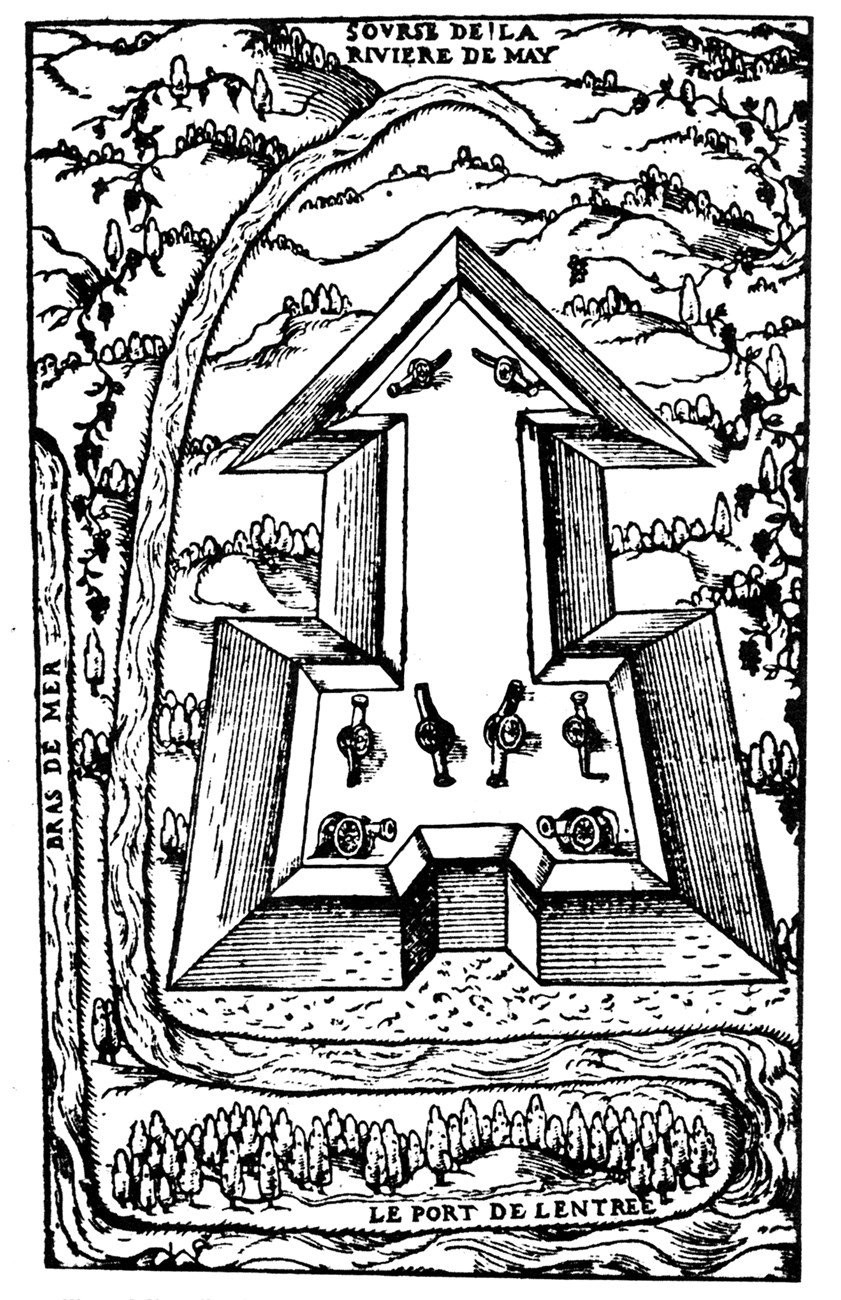
In Florida, both Spain and France hoped to claim lands and political leverage. By the time the French planted their colony at La Caroline, Spain was entrenched in South and Central America and its sea routes through the Caribbean were well established. Spanish ships bearing gold and silver from the mines of Mexico and Peru stopped at Havana before sailing for Spain. They rode the Gulf Stream through what is now the Straits of Florida and up the southeastern coast of North America. Since the days of Columbus, the Spanish had included Florida in their colonial realm. The Spanish were uneasy about a French colony because their treasure ships, while they followed the Florida coast, could be easy prey for suspected French raiders in their nearby haven at La Caroline. Religious affiliations would prove useful tools in the propaganda surrounding expeditions to remove the French and later avenge them.
Construction of the fort began on June 30,1564 under the command of Laudonnière. A plot of ground was cleared of trees and a triangular outline was laid out as a guide. The fort was made of earth, wood, and turf. The side to the west or landward side of the fort was bordered by a moat that ran along the outside of a parapet. The other side was toward the river and defended by a palisade of wood timbers, these could be taken down for resupply by water. On the south side was a “bastion” built of earth, wood, and turf. The exact size of the fort is not recorded in any of the French documents. Laudonnière does mention that within the middle of the fort there was a “large area [plaza] eighteen paces square”. On the southern edge of the plaza was a storage shed. A guardhouse was built facing the southern wall. A house constructed on the north side was apparently “a bit to high, for not long afterwards the wind blew it down,” leading Laudonnière to comment that “nothing should be built with upper floors in this land because of the high winds”. Laudonnière’s house, which included covered porches, was placed on the riverside part of the fort. Another important feature was a bake oven, positioned outside the fort to prevent fires. The majority of the inhabitants appears to have lived within the fort, although there are reports of some buildings being located outside. 
John Carter Brown Library |
Last updated: March 19, 2024
